Differential Optical Absorption Spectroscopy (DOAS)
Lower Atmosphere – Fieldwork
Differential Optical Absorption Spectroscopy (DOAS)
Noxon (1975) was the first to analyse light measured in the field with the differential optical absorption spectroscopy (DOAS) method, here of scattered sunlight, although the name was given to this technique only later by Platt et al. (1979). Due to the numerous processes a photon can undergo in the atmosphere (e.g scattering), the absolute light intensity of a recorded spectrum cannot easily be simulated. The lack of this information is overcome by investigating only the narrowband absorption features to quantify concentrations of trace gases. This is expressed by the term 'differential' in DOAS. In general, this technique can be applied to a variety of target species, light sources and platforms as well as observation geometries: Occultation measurements of the sun, moon and stars. But also artificial light sources can be used in the field in the so-called long-path DOAS technique (see below) or for cavity-enhanced measurements where the light path is folded several times with the help of a set of highly reflective mirrors. This technique can as well be applied in laboratory studies. Scattered sun-light can be observed from the ground, from aircrafts, and from satellite platforms. With balloon-borne instruments, usually occultation measurements are performed. Target species include OH, HO2, HONO, HCHO, CHOCHO, O3, NO2, NO3, ClO, OClO, IO, OIO, I2, and BrO. In practice, concentrations can be retrieved from the measured spectra using a modified Lambert-Beer's law. For that, the absorption cross sections off all relevant absorbers in a certain wavelength interval are simultaneously fitted to the measured optical density after a polynomial has been subtracted to account for broad-band features.
We have run two different DOAS systems for field measurements: a long-path DOAS and a multi-axis DOAS. Both systems have been used in many campaigns around the world (e.g. Plane and Smith, 1995; Allan et al., 2001; Saiz-Lopez and Plane, 2004; Gomez Martin et al., 2013) and are currently operated by the Atmospheric Chemistry and Climate Group of the Rocasolano Institute in Madrid. In general, our group has focussed on the chemistry of halogen species in the marine boundary layer and it's effects on ozone. However, we also participated in the OP3 project in the Bornean rainforest where we successfully detected glyoxal.
LP-DOAS
The long-path differential optical absorption spectroscopy (LP-DOAS) instrument is an active measurement system that uses a high pressure Xenon arc lamp as light source. This lamp is placed at the focal point of a Newtonian telescope that acts as transmitter and receiver unit at the same time. The collimated light beam is directed towards a corner cube array reflector (accuracy < 5 arc seconds) which is placed several kilometres away from the source. The reflected beam is then focused onto an optic quartz fibre bundle which feeds the light into a Czerny Turner spectrometer with a focal length of 0.5 m. The refraction grating disperses the light onto the chip of a cooled charge-coupled device (CCD) detector. The spectrometer is temperature-stabilised to avoid wavelength drifts with changes of the ambient temperature. The spectral resolution of this system obtained from the full-width half-maximum of a representative line is 0.3 nm.
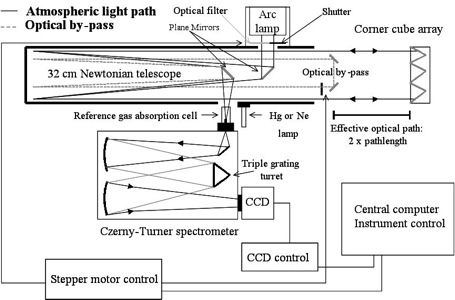
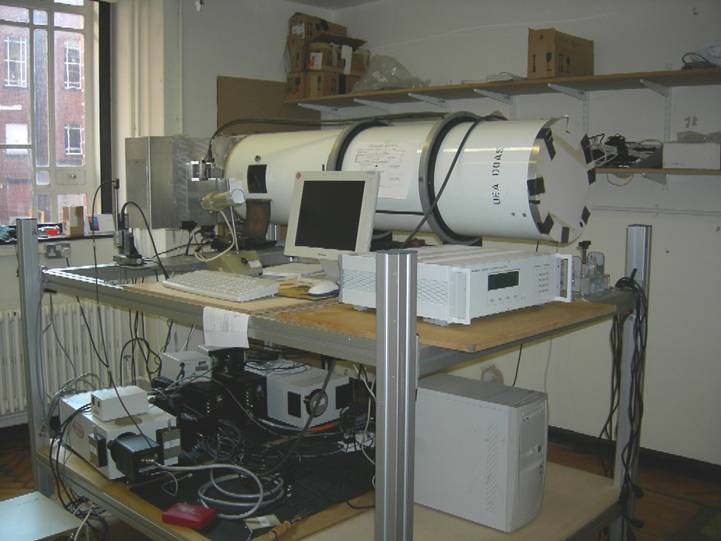
MAX-DOAS
The multi-axis DOAS is an advancement to the classical zenith-sky scattered-sunlight spectroscopy method (e.g Solomon et al., 1987; Perliski and Solomon, 1993). Whereas zenith measurements are most sensitive towards stratospheric absorbers, pointing the telescope to the horizon significantly enhances the light path in the lower troposphere while not effecting the stratospheric path. This is illustrated in the figure below. The absorption by a certain molecule along the light path can be converted into a slant column density by spectral de-convolution as described above.
The Leeds MAX-DOAS system utilises an optical fibre bundle mounted to a stepper motor (see photo below). This enables us to flexibly scan the horizon under different elevation angles. A lens is placed in front of the glass fibre to limit the field of view to 1°. The same spectrometer/detector system is used here as for the LP-DOAS.
By combining the slant column densities from several lines of sight including the zenith, the concentration of an absorber in the boundary layer can be obtained by simulating the light path through the atmosphere with a radiative transfer model taking into account multiple scattering and the correct treatment of the aerosol load. For the interpretation of the measurements, a programme has been developed to retrieve profiles. The radiative transfer model SCIATRAN (e.g. Rozanov et al. (2005), http://www.iup.uni-bremen.de/sciatran) in combination with a retrieval based on the method of optimal estimation is used for that (Rodgers, 2000).
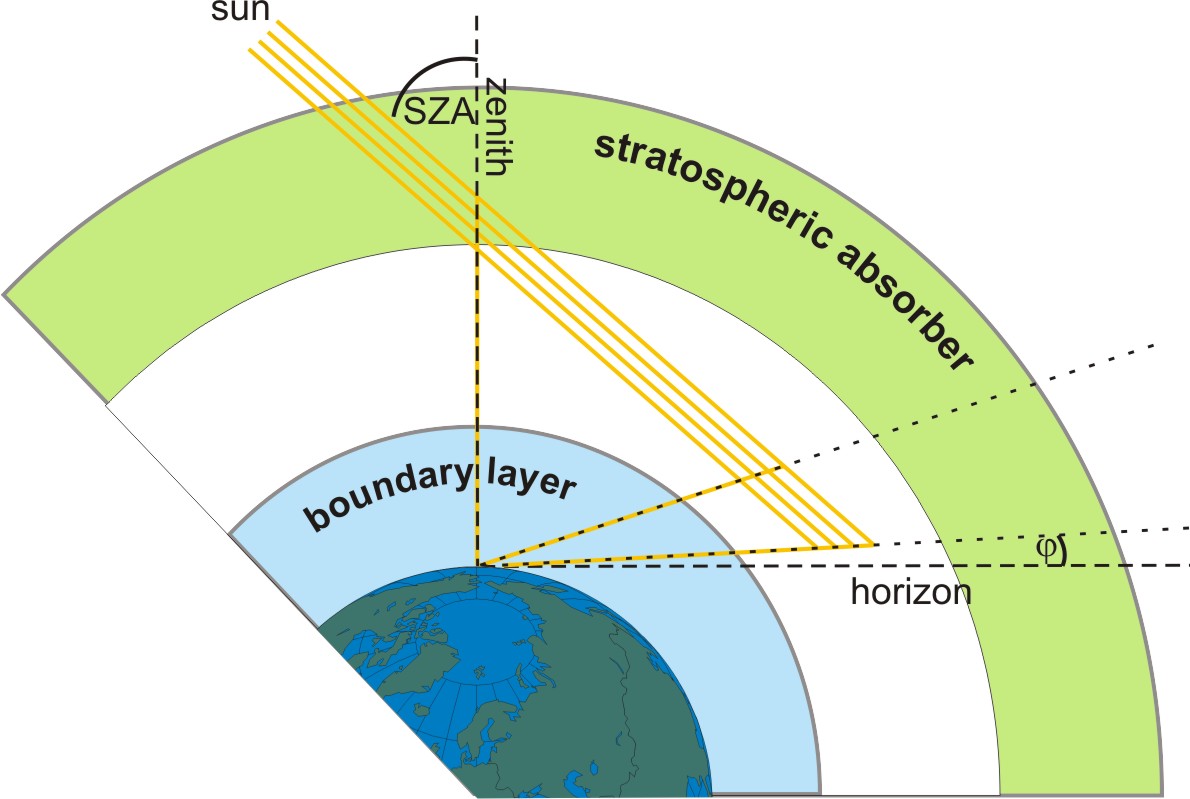
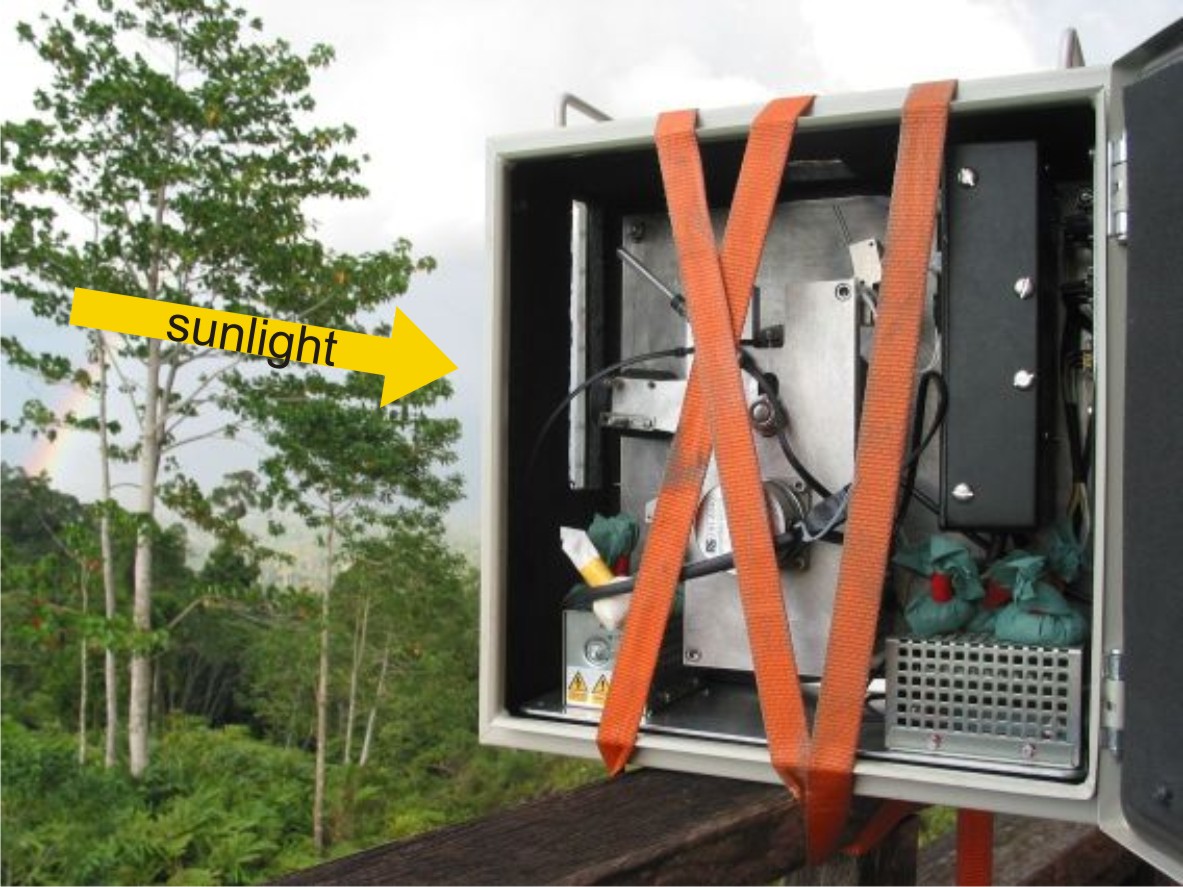
Field Campaigns
The Leeds DOAS group has been involved in various projects on the role of halogens and the nitrate radical in the atmosphere. In the following, some of the campaigns are described in more detail. Please also refer to the publications section.
-
- Climate and Halogen Reactivity Tropical Experiment (CHARLEX) was a campaign from September 2010 to February 2012 on the islands of Isabela and San Cristobal, Galapagos, in collaboration with the Atmospheric Chemistry and Climate Group (AC2) at the Instutute for Physical Chemistry Rocasolano (Madrid)
- Laminariae Emissions in Galicia: Observation by Flourescence and Absorption Spectroscopy (LEGOLAS) – a two week campaign in Galicia on the North-West coast of Spain in collaboration with AC2.
- NCAS-funded 10 months long campaign at Sao Vicente (Cape Verde Islands) from February 2009.
- Reactive Halogens in the Marine Boundary Layer (RHaMBLe) at the Station Biologique in Roscoff (France): RHaMBLe is a part of the NERC sponsored UK SOLAS project aiming at understanding the impact of halogen chemistry. The campaign at Roscoff in summer 2006 was a collaborative effort of six universities which did conduct a five week intensive studying the different halogen species in the mid-latitudinal marine boundary layer.
- RHaMBLe at Sao Vicente (Cape Verde Islands) : A new atmospheric monitoring site has been developed at Cape Verde as a part of the SOLAS project which is used as a base to increase our understanding of the oceanic atmosphere. We ran a year-long (2006-2007) monitoring of different halogen species at this location to study in detail the global imapct of halogens.
- Impact of combined iodine and bromine release on the Arctic atmosphere (COBRA) at Kuujjuarapik, Hudson Bay (Canada) in spring 2008.
- Oxidant and Particle Photochemical Processes (OP3-DANUM-08) above a South-East Asian tropical rain forests at Borneo (Malaysia) in summer 2008. Also, have a look at Kate's blog.
- The Chemistry of the Antarctic Boundary Layer and the Interface with Snow (CHABLIS) project at Halley Bay, Antarctica was an initiative to explore the atmospheric chemistry of the coastal Antarctic boundary layer in far greater detail and for a longer period of time than has been achieved hitherto. Our role in this campaign has been to help understand the role of halogens in the Antarctic MBL.
- North Atlantic Marine Boundary Layer EXperiment (NAMBLEX) at Mace Head, Ireland.
- Land Ocean Interaction Study (LOIS) at Weybourne, UK.
- Atmospheric Chemistry Studies in the Oceanic Environment (ACSOE) at Mace Head, Ireland.
- Aerosol Characterization Experiment (ACE) at Tenerife, Canarias.
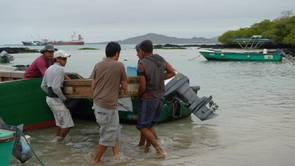
CHARLEX (Galapagos): Downloading the instruments 
CHARLEX (Galapagos): Carrying the LP-DOAS retro-reflector through the cactii forest 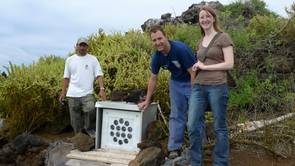
CHARLEX (Galapagos): LP-DOAS retro in it s final position 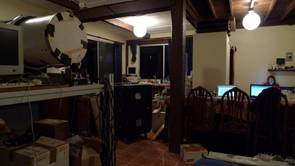
CHARLEX (Galapagos): The field lab 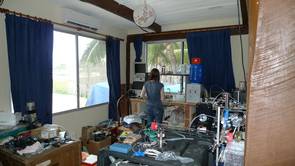
CHARLEX (Galapagos): The field lab 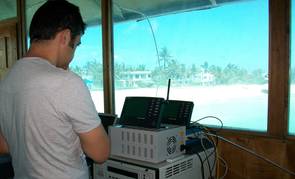
CHARLEX (Galapagos): In situ sampling station 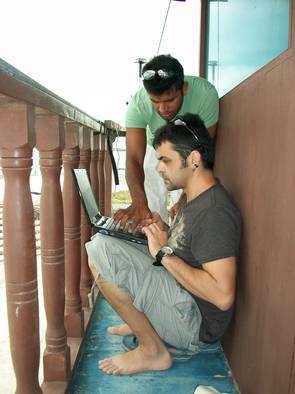
CHARLEX (Galapagos): In situ sampling station 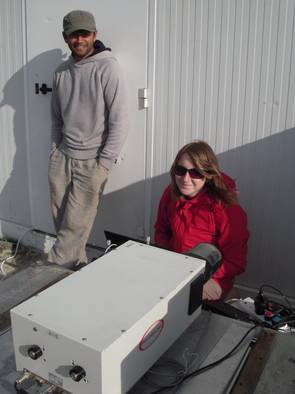
LEGOLAS (Galicia): i-DOAS 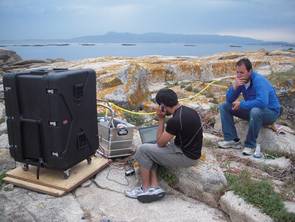
LEGOLAS (Galicia): ROFLEX 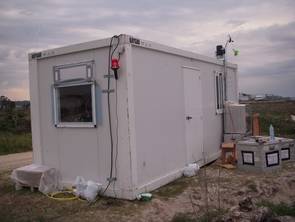
LEGOLAS (Galicia): The field lab in a shipping container 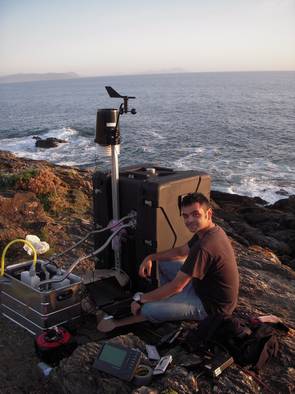
LEGOLAS (Galicia): ROFLEX 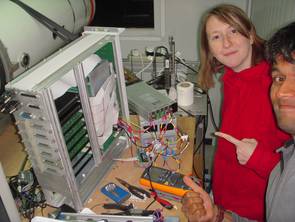
LEGOLAS (Galicia): Rapairing the LP-DOAS motors 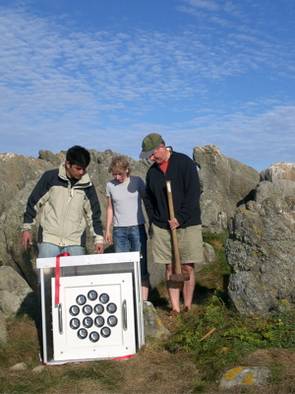
RHaMBLe (Roscoff): Planting the LP-DOAS retro 
RHaMBLe (Roscoff): The field lab 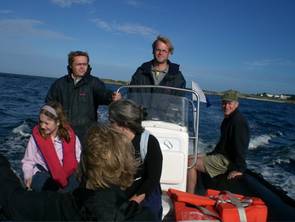
RHaMBLe (Roscoff): Having some fun 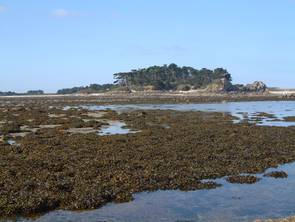
RHaMBLe (Roscoff): Algae fields 
RHaMBLe (Cape Verde): Transporting the instruments to the site 
RHaMBLe (Cape Verde): Taking some measurements 
RHaMBLe (Cape Verde): LP-DOAS beam in the mist 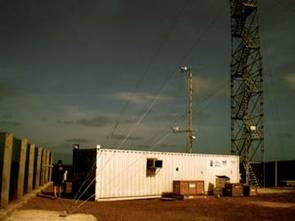
RHaMBLe (Cape Verde): The field lab 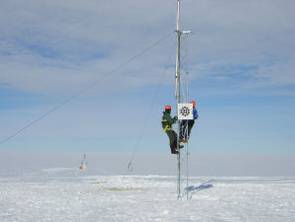
CHABLIS (Antarctica): Aligning the LP-DOAS retro 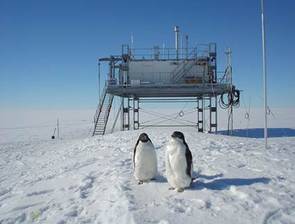
CHABLIS (Antarctica): The field lab
